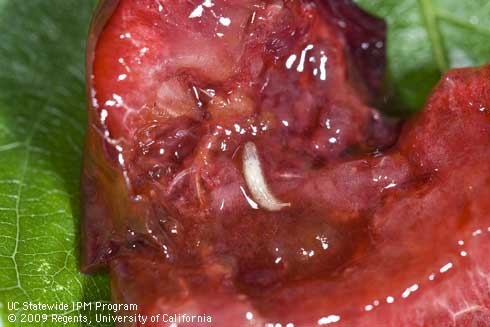One of the newer exotic pests in California, spotted wing drosophila, caught growers and researchers off guard last year, according to a special report by Dow AgroSciences that was published today in American/Western Fruit Grower magazine.
The Asian native pest was first detected in California in 2008 along the coast. By then, it had already established itself to an extent that CDFA deemed it impossible to eradicate. SWP has increasingly been found inland, especially in the sweet cherry districts around Stockton and Hollister, the article said.
“That’s when the wheels came off the wagon and a lot of people got hurt very badly,” the story quoted UCCE specialist Robert Van Steenwyk. “Then it raced up and down the West Coast.”
SWP has been found in many California counties infesting ripening cherry, raspberry, blackberry, blueberry and strawberry crops. It has also been observed attacking other soft-flesh fruit such as boysenberry, varieties of Japanese plums, plumcots and nectarines.
Early recommendations that growers need only monitor for male SWP, which are much easier to find because of their distinctive spotted wings, was wrong.
"What researchers didn’t know was that the sex ratios were extremely variable. Some growers got hit with bad infestations because, while they were looking for spotted wings, female SWD were attacking their fruit," the story said.
More information on SWD monitoring and control are outlined on the UC IPM website. Potential economic impacts of the pest were documented in a Giannini Foundation of Agricultural Economics report.
Attached Images:
